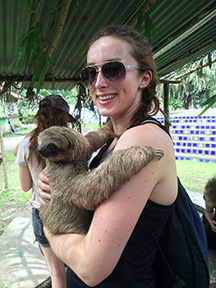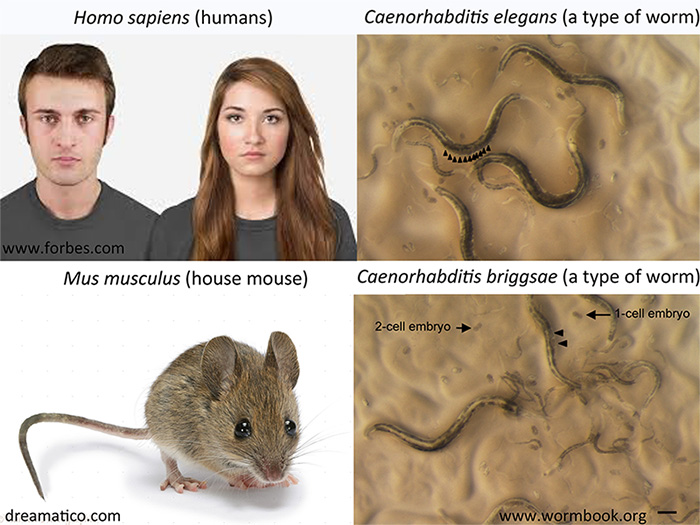Name: Antonia Darragh
Hometown: Davis, California
Hobbies: Sports, backpacking, yoga and volunteering
What do you study? I study tiny worms. I want to know how worms that look very similar under a microscope have large differences in their DNA. DNA is the genetic material you get from your parents and that all organisms have; DNA says what type of organism you are- like how you look and what you eat. The DNA in the two kinds of worms shown below is about as similar as the DNA that mice and humans have, but mice and humans look very different. I would like to know why this is.
Why is it important? These worms are very easy to take care of in a lab and information we learn about worms may provide similar information about other organisms like mice and us (humans). Looking at how animals change can help us understand how living organisms may change in different environments. For example, if honeybees can survive in higher temperatures or how germs may change to avoid being killed by medicine. Therefore, understanding how organisms change can help us know how to protect endangered animals and also help protect people from diseases.
What do you like about being a scientist? I enjoy learning, thinking, discovering and sharing how life works and why life works with others.
The image below shows two different varieties of worms (C. elegans and C. briggsae) on the top and bottom right that have about the same number of differences in their DNA as humans and mice have. Images of humans and a mouse are shown on the top and bottom left respectively. I investigate the worms shown here and also other worms to understand how they are different.


